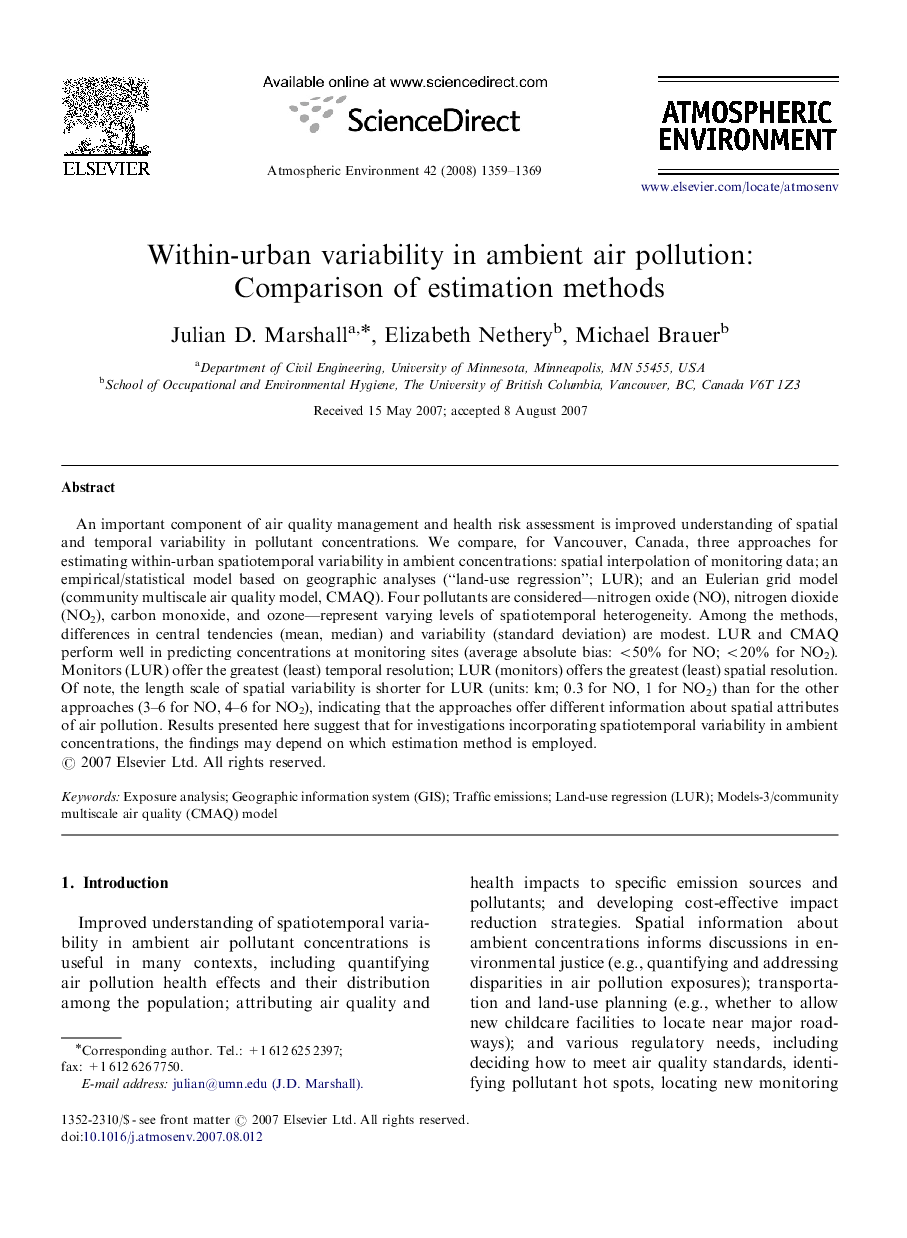| کد مقاله | کد نشریه | سال انتشار | مقاله انگلیسی | نسخه تمام متن |
|---|---|---|---|---|
| 4442801 | 1311166 | 2008 | 11 صفحه PDF | دانلود رایگان |

An important component of air quality management and health risk assessment is improved understanding of spatial and temporal variability in pollutant concentrations. We compare, for Vancouver, Canada, three approaches for estimating within-urban spatiotemporal variability in ambient concentrations: spatial interpolation of monitoring data; an empirical/statistical model based on geographic analyses (“land-use regression”; LUR); and an Eulerian grid model (community multiscale air quality model, CMAQ). Four pollutants are considered—nitrogen oxide (NO), nitrogen dioxide (NO2), carbon monoxide, and ozone—represent varying levels of spatiotemporal heterogeneity. Among the methods, differences in central tendencies (mean, median) and variability (standard deviation) are modest. LUR and CMAQ perform well in predicting concentrations at monitoring sites (average absolute bias: <50% for NO; <20% for NO2). Monitors (LUR) offer the greatest (least) temporal resolution; LUR (monitors) offers the greatest (least) spatial resolution. Of note, the length scale of spatial variability is shorter for LUR (units: km; 0.3 for NO, 1 for NO2) than for the other approaches (3–6 for NO, 4–6 for NO2), indicating that the approaches offer different information about spatial attributes of air pollution. Results presented here suggest that for investigations incorporating spatiotemporal variability in ambient concentrations, the findings may depend on which estimation method is employed.
Journal: Atmospheric Environment - Volume 42, Issue 6, February 2008, Pages 1359–1369